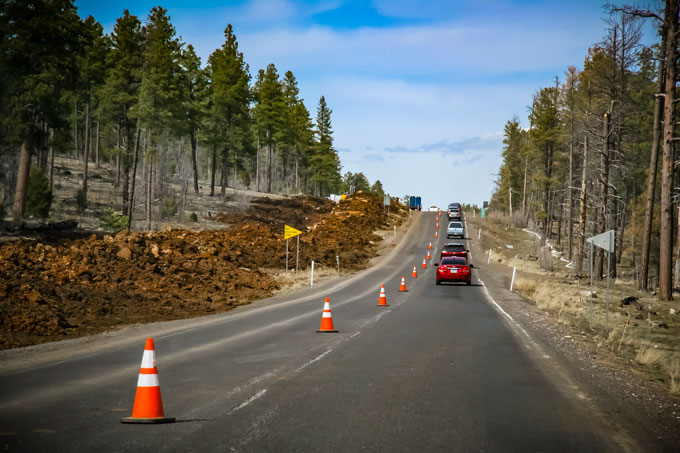Consider the colorful history of traffic cones
Consider the colorful history of traffic cones

By Peter Corbett / ADOT Communications
At a time of year when road crews are busy improving Arizona’s highways and roads, it’s hard to imagine a world without traffic safety cones.
There was such a time in the 1940s, as roads and automobile traffic spread across the nation. Engineers needed a device to keep traffic merging safely and to protect those building roads.
Enter one Charles D. Scanlon, a Los Angeles street department painter. In 1940, he designed a “safety marker” to keep cars away from painted lines on city roads, according to the Traffic Safety Store. Three years later, Scanlon was granted a patent for the Scanlon Safety Marker.
“It is … a major object of my invention to provide a marker which is readily visible, yet which causes no damage to an automobile if the latter strikes it,” Scanlon wrote in his patent filing. “It is another object of my invention to provide that such a marker which will return to its upright position after a glancing blow, and which may be dropped from a moving truck and assume an upright position.”
Scanlon and a partner, Rodney Taylor, initially used tire scraps but went on to use other materials for their emerging device.
Before Scanlon’s bright-orange idea, traffic markers were wooden barriers that could damage vehicles and were hard to move and store. Cones could be easily stacked and stored.
By 1947, Interstate Rubber Products Corp. began manufacturing traffic cones of molded rubber sheets. This year marks the 70th anniversary of traffic cones being mass produced.
Not surprisingly, it’s not a wildly celebrated anniversary. But the traffic cone is worth its weight in plastic, warning motorists of hazardous impediments. It stands tall and can take a hit.
Highway traffic cones are 18 to 28 inches tall, according to standards set by the Manual of Uniform Traffic Control Devices.
ADOT and its contractors use thousands of cones for highway projects and at crashes to create tapered lane closures. All thanks to Charles D. Scanlon, father of traffic cone.



